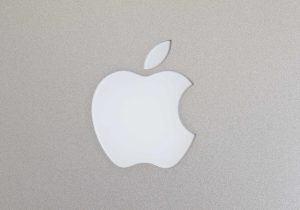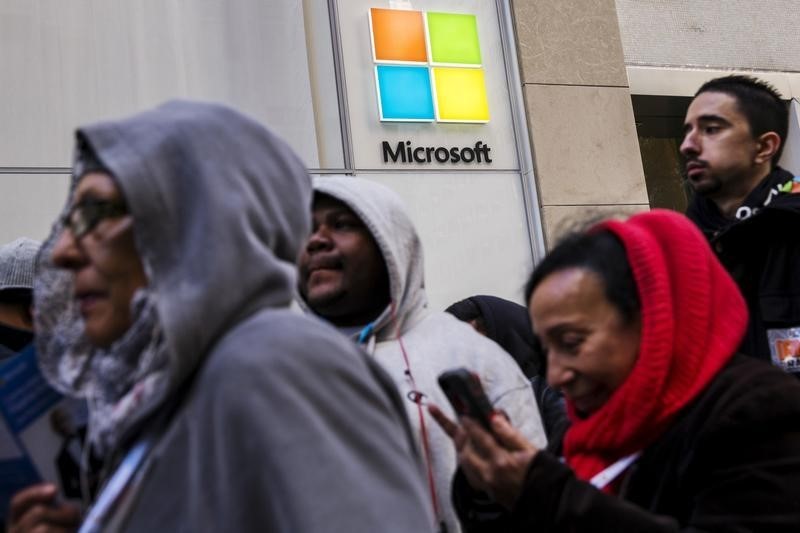© Reuters.
Apple Inc. (NASDAQ:) and Microsoft Corporation (NASDAQ:), both established in the 1970s, have taken different paths in the technology sector. Today, Apple continues to focus on consumer devices like the iPhone 15 lineup, while Microsoft is expanding its cloud computing services.
Apple’s dominance in consumer electronics has led to significant milestones, including reaching a $1 trillion market capitalization in 2018 and recently hitting $3 trillion. Despite these achievements, Apple has been grappling with declining iPhone revenue for three consecutive quarters. Longer iPhone upgrade cycles and economic issues such as inflation and rising interest rates have added to the company’s challenges. Furthermore, Apple’s stock has seen a 14% drop from its all-time high due to broader market sell-off and internal issues.
On the other hand, Microsoft’s valuation is trailing only $180 billion behind Apple’s. The company’s stock currently trades at a premium to Apple’s based on their respective P/E ratios – Microsoft’s P/E ratio stands at 31.9 while Apple’s is at 28.2.
Microsoft has strategically shifted towards cloud computing services for businesses, resulting in accelerated growth of its Azure platform revenue. The company has also invested $10 billion in OpenAI, positioning itself as a key distributor of AI technologies through its Azure cloud platform and Azure OpenAI Service segment. This move has allowed Microsoft to integrate AI technology across its product portfolio.
The company’s plans to expand its AI monetization are evident with tools like Copilot, which was used by 40% of Fortune 100 companies during its beta phase. If Microsoft continues to leverage AI effectively and capitalizes on predictions that AI will add between $7 trillion and $200 trillion to the global economy by 2030, it could soon surpass Apple’s valuation and become the world’s most valuable company.
While Apple’s services segment contributes only 25% of total revenue, it has been insufficient to counterbalance potential stagnation in the hardware business. Despite these challenges, Apple remains a significant player in the technology sector with its strong consumer device lineup. As both companies continue to evolve, the race for the top market cap is set to intensify.
InvestingPro Insights
Drawing from InvestingPro’s real-time data and tips, we can gain a deeper understanding of both Apple and Microsoft’s financial health and market position.
Apple’s management has been aggressively buying back shares, signifying their confidence in the company’s future. The company has also been yielding a high return on invested capital and has maintained dividend payments for 12 consecutive years, further demonstrating its financial stability.
In terms of real-time data, as of Q3 2023, Apple has a market cap of $2.51 trillion and a P/E ratio of 32.56. Its revenue for the last twelve months stood at $218.31 billion, marking a growth of 7.5%. The company’s return on assets was 19.14%, indicating efficient use of its resources.
Turning to Microsoft, it has raised its dividend for 18 consecutive years and analysts predict it will be profitable this year. This, combined with a high return on invested capital, paints a promising picture for the company’s future.
Microsoft’s real-time data shows a market cap of $2.66 trillion and a P/E ratio of 28.46 as of Q3 2023. The company’s revenue for the last twelve months was $383.93 billion, albeit with a slight decline of 0.93%. The return on assets stood at a robust 28.23%.
These InvestingPro Tips and data points underscore the financial strength and resilience of both Apple and Microsoft. For more insightful tips and data, consider exploring InvestingPro’s platform, which offers additional tips for a comprehensive understanding of your investments.
This article was generated with the support of AI and reviewed by an editor. For more information see our T&C.
Read the full article here
















